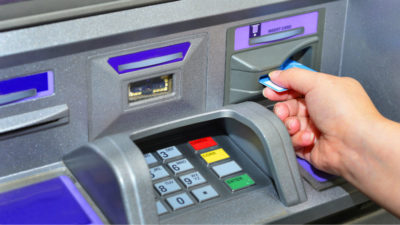Bitcoin had a terrible 2018. Starting off the year at approximately $14,000 (USD), the cryptocurrency closed it at less than $4000 — a decline of 73%. Part of the fall can be attributed to speculative activity, including shorts and profit-taking. But another factor that contributed to the sell-off was regulation. Toronto-Dominion Bank (TSX:TD)(NYSE:TD) banned the purchase of Bitcoin with credit cards in February of last year, following similar action by several American banks. Actions that make it impossible for people to buy Bitcoin drive the price down by lowering demand; should regulatory clampdowns continue, we can expect Bitcoin to keep sinking in 2019.
Minus these conditions, the picture is less clear. Although the 2017 crypto bull was mostly driven by speculators, Bitcoin itself enjoys a certain level of actual use as a currency, which would indicate that there is organic demand for BTC and that its value won’t drop to zero when speculators run away with their tails between their legs. But the question of exactly where Bitcoin is going is not an easy one. To answer it, we need to look at three things: energy consumption, scarcity, and black market demand.
The energy factor
One factor in Bitcoin’s value is energy consumption. “Mining” Bitcoin involves running through complex algorithms on a computer with mining software. The amount of electricity consumed in this process is enormous, which gives Bitcoin a certain value (assuming that a level of demand for exists in the first place). This value is compounded by the built-in scarcity of cryptocurrency.
The scarcity factor
Bitcoin has a fixed supply: only 21 million Bitcoins can be mined in total, and the last Bitcoin can be mined no earlier than 2140. Each year, the total number of Bitcoins earned by mining a black is halved. This means the total number of new Bitcoins added to the supply is reduced each year. So the scarcity built into Bitcoin is significant. Based on this factor alone, two economists from the London School of Economics calculated a Bitcoin to be worth $20. However, there is a final factor that could drive the currency’s value higher.
The black market factor
Although most of Bitcoin’s price at its peak was driven by speculative demand, the currency does have one actual use case: black market purchases. Bitcoin is the currency of choice for people looking to buy drugs and other types of contraband on online illicit markets. This means that Bitcoin does enjoy actual use as a currency (if not “legitimate” use), and that its value is not solely driven by speculators.
The first two factors mentioned in this article (energy consumption and scarcity) mean nothing if nobody is using Bitcoin. It’s possible to spend infinite resources harvesting an infinitely scarce commodity and have it still be worth $0, if the demand is zero. This isn’t the case for Bitcoin. People do use Bitcoin as a currency, converting dollars into BTC to purchase illicit goods. The “value” of Bitcoin is based on how many people are doing this, for what quantity of purchases, plus the scarcity and energy consumption factors already mentioned. Given the relatively small size of online illicit markets, it seems likely that Bitcoin is overvalued and set for even more losses this year. But that could change if online black markets continue to grow.








